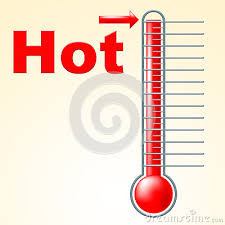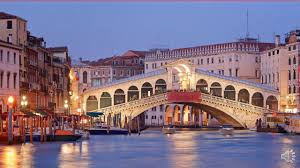Climate Change Wrap Up : 2016
Good Morning young uns!
Today is the 17th of December 2016 and the holidays are here!
As per the new tradition, we will end the year in style by inviting young talent to a 2016 climate change rap up competition.
The winner gets his Christmas wish fulfilled by Santa. (Or you can come over and have a safari in the Maasai Mara)
And so here is your 2016 climate change news wrap up before you go for your Christmas break.
The year was a great one in terms of climate change, as climate change entered more forcefully into the public consciousness, there was good momentum which camefrom signing the Paris Agreement last year and that worldwide consensus and goodwill was a driving factor for this year.
So let’s review the year shall we?
February and March each set new records as the
hottest months in record. The trend continued in June, July and August with
September 2016 breaking all previously held records when it comes to
temperature.
There was a High Level Meeting on April 22nd
in NYC whereby 175 nations signed the Paris Agreement and 15 deposited their
instruments of ratification at the UN headquarters.
The UNFCCC Climate Change Conference took place in Bonn Germany, the headquarters of UNFCCC, in May 2016. It was a meeting of subsidiary bodies which do the leg and ground work (hehe!) for the Paris Agreement. The good people did their best to come up with rules, procedures, processes, policies ahead of COP 22 in November 2016.
Climate week in New York 2016
This was held by the Climate Group in September 2016
in New York City. It coincided with the United Nations General Assembly. The
week was to address all things climate. There were many keynote speakers from
cross cutting sectors such as energy, environment, technology and
manufacturing. Government officials, civil society, business and industry
leaders and other important figures attended. There were high level events
addressed by such people as the US Special Envoy for climate change Jonathan
Pershing and Ernest Moniz the US energy secretary. There were over 60 events
all addressing different aspectsof climate change.The Empire State Building was
lit in green to commemorate the climate week.
Notable events include the meeting of mayors under the banner of the C40. Cities as individual entities are responsible for a lot of emissions so if they can turn a new leaf (so as to speak) and embrace renewables and carbon neutrality, then that’s a significant step in the fight against climate change. It is therefore important to rope in leaders such as mayors so as to reinforce the fight against climate change.
Carbon price
The issue of a carbon price was also discussed to
some length. A carbon price basically means making an emitter pay for every one
ton of CO2 emitted.
Aviation sector
The aviation sector
accounts for 6% of global emissions per sector. There was a meeting held in
Montreal in October 2016 to discuss how these emissions can be limited. An
agreement for the use of a carbon offset scheme due to begin in 2021 was
reached.
Montreal protocol Kigali
The 28th Meeting of parties to the
Montreal protocol of the Vienna convention
was held in Kigali in October 2016 whereby an amendment was passed to phase out
the use of hydro fluorocarbons. Hydro fluorocarbons are potent
greenhouse gases. The deal was to replace them with more ‘carbon friendly
‘alternatives such as hydro olefins and carbon dioxide (?-puzzling). Hydro fluorocarbons are used as refrigerants
and in aerosol sprays. As usual, different blocs decided to phase out the use
of HFCs at different times mainly because of concerns about the economy.
There was also a commitment by developed countries to give finance to developing countries to help in the phasing out and adaptation.
October 2016 was also first runners up as the second
hottest October in 136 years.
Entry of Paris Agreement into force
The Agreement, signed in Paris last year in 2015,
committed to bring global temperature rise this century to 2 degrees above
preindustrial levels or better still 1.5 degrees.
The Paris Agreement would only come into force 30 days after55 countries responsible for 55% of greenhouse gas emissions ratified the pact. Everybody agreed that it would be awesome if it came into force before COP22.
This came to be after America and China, the two biggest polluters led the way by ratifying it in September leading the way for others. On 5th October 2016, the EU ratified the pact and on 4th November, one week before COP22, it came into force. This made everyone happy and they all walked with a spring in their step straight to COP22.
COP 22.
 |
| image courtesy of Wedo.org |
COP 22 was notable because it was widely billed as an African COP because the voice of African countries, which are the most affected by climate change, would be heard loud and clear.
It was also noted for being more inclusive as it was more involving of the youth, women and indigenous groups (we will deal with these topics in the future).
Other things that happened was that the developing
countries came together to form the Climate Vulnerable Group of 47. This group
decided to champion the use of renewable energy in Africa committing to go 100%
renewable in the future.
It was a disappointment however when it came to climate finance as there was almost nothing except an additional 165 million dollars to help poor countries in adaptation and mitigation.
Morocco spearheaded the formation of a group known as the Adaptation of African Agriculture (AAA) whose title is self-explanatory.
African countries also came together and decided to phase
out cultivation of palm oil.
Palm oil is a major ingredient in manufacturing sector (ingredient in cooking oil, soaps etc.). The phasing out was necessary because rainforests are cut down to avail land for growing palm oil trees. This deforestation doesn’t help at all in shielding host countries from effects of climate change.
Palm oil is a major ingredient in manufacturing sector (ingredient in cooking oil, soaps etc.). The phasing out was necessary because rainforests are cut down to avail land for growing palm oil trees. This deforestation doesn’t help at all in shielding host countries from effects of climate change.
Carbon neutrality
It was agreed that the planet as a whole needs
emissions to peak so that they can then start falling. If it was possible, it would be best for the
globe to be carbon neutral in the second half of the century.
48 countries pledged to cut their emissions by
certain timelines. Germany for example pledgedto a reduction of 80- 95% by 2050
levels.
COP 22 however was a bit overshadowed by the American election and it was agreed that a global call to action be issued as the momentum for action on climate change could not be stopped or slowed.
COP 22 was significant because of Hakima El Haite (Ministers of Environment of Morocco)and Laurence Tubiana (French ambassador in charge of climate change negotiations)the two countries that had the presidency of COP22 and COP 21 respectively. The two were designated as climate champions and were tasked with getting as much climate consensus from as many players as possible. Incidentally, the two champions are women.
Renewable energy was also discussed and it was agreed that this is the way to go for everyone.
COP 23 in 2017 will continue building on the work of COP 22.
The next COP with significant firepower will be COP24 in 2018
Move to the next post kindly.
Thank you me lady, young master.





Comments
Post a Comment